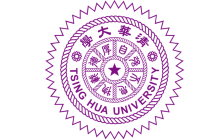
Professor Yeh explains the potential applications of high-entropy materialsCredit: National Tsing Hua University
National Tsing Hua University (NTHU) is a comprehensive university consistently ranked as one of the best on the island. Its cross-disciplinary environment has contributed to breakthroughs which translate basic research results in materials science into real-world engineering and medical benefits.
Unleashing the potential for high-entropy alloys
Traditional alloys have typically involved one or two major elements, such as steels and titanium alloys. The status quo was disrupted in 2004 by Jien-Wei Yeh, director of the High Entropy Materials Center of NTHU, who became widely recognized in 2004 as the first to report the success of high-entropy alloys (HEA).
HEA contains five or more principal elements, providing excellent strength-ductility balance, as well as enhanced resistance to wear, fatigue, oxidation, thermal softening, and corrosion. While the slipping of atomic layers in pure metal lattice structure deforms it, the mix of metal elements with different atomic sizes can distort the regular lattice and reduce the tendency to slip, creating a much harder alloy. Locked into place, mixed atoms of HEA’s different elements lead to its properties in thermodynamics (high entropy), kinetics (sluggish diffusion), structure (severe lattice distortion), and cocktail effects (synergistic on properties due to inter-element interactions).
“We have taken steps to overcome long-standing material bottlenecks, including poor performance, high cost, and toxicity,” explains Yeh. “We continue to explore new possibilities for compositions from the periodic table, promising high efficiency, durability, and sustainability under extreme conditions for antibacterial, catalytic, energy storage, thermoelectric, and integrated circuit devices.”
Normalizing tumour vessels
In other research from National Tsing Hua University, Yunching Chen of Institute of Biomedical Engineering along with Tsai-Te Lu, proposed in a 2020 Nature Nanotechnology paper, a new treatment for cancer.

Dr. Yunching Chen (left) and Tsai-Te LuCredit: National Tsing Hua University
Blood vessels in tumours grow in an unrestrained manner contributing to metastasis and immunosuppression, and driving resistance to chemotherapy and cancer immunotherapy.
“We based our idea on how these tumorous blood vessels, could be ‘normalized’, to help to enhance the function of anti-cancer drugs and immune cells,” says Chen.
“Our polymer-based nanodelivery system stabilizes the biomimetic dinitrosyl iron complex (DNIC), which is also easily synthesized for mass production,” added Lu. “DNIC releases and prolongs the half-life of nitric oxide (NO), and this can help the normalization of blood vessels to enhance chemotherapeutics, and reprogramme the immunosuppressive tumour microenvironment.”
The NanoNO nanocarriers are being investigated for treating hepatocellular carcinoma. Hospitals and international pharmaceutical companies are interested in collaboration.


